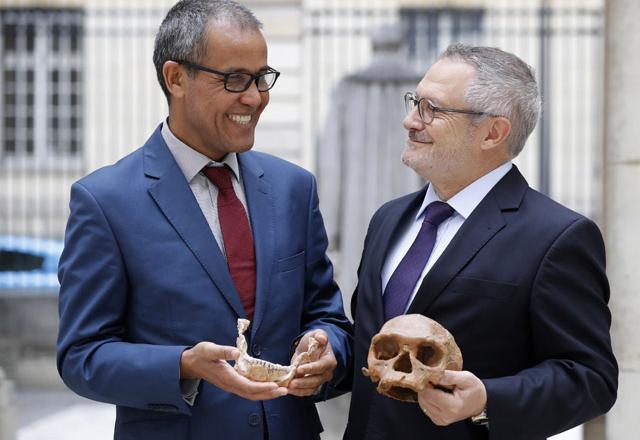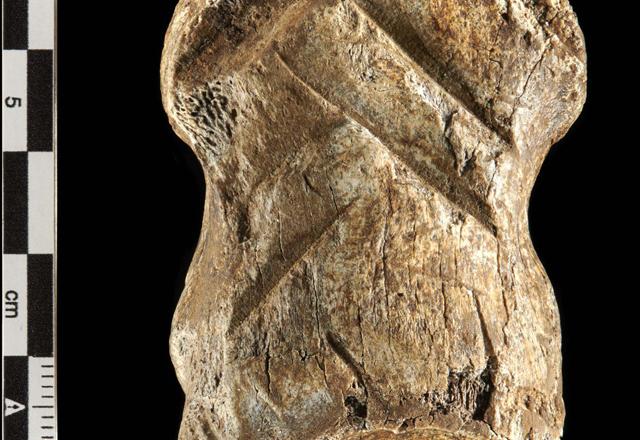You are here
The 'obsession' that changed human history
By AFP - Jun 08,2017 - Last updated at Jun 08,2017

French paleoanthropologist Jean-Jacques Hublin (right) and Abdelouahed Ben-Ncer of the National Institute of Archaeology and Heritage Sciences in Morocco pose with the casting of a skull of Homo Sapiens discovered in Morocco on Tuesday in Paris (AFP photo)
PARIS — An "obsession" with the lower jaw of a long-dead human, unearthed in the 1960s at a prehistoric Moroccan campsite, led palaeoanthropologist Jean-Jacques Hublin to the discovery of a lifetime.
After decades of work to identify the jawbone's owner, Hublin was able to announce Wednesday that it belonged to the earliest known member of our species.
His efforts revealed that Homo sapiens is 100,000 years older than previously assumed — ageing our species by a whole third and dislodging East Africa as the cradle of humankind.
It was in 1961 that mining activity at the site called Jebel Irhoud, not far from Marrakesh, first brought an ancient human skull to the surface, followed by more fragments over subsequent years of excavation.
Initially, the pieces were dated to about 40,000 years ago, later pushed back to 160,000 years ago.
At the time, the notion that humans originated in Africa did not exist, so the remains were not in the running for Homo sapiens status.
Some hypothesised the remains belonged to a type of African Neanderthal — the species then considered to have been the forerunner of modern humans.
Others proposed it was a kind of Neanderthal-human hybrid, yet others an archaic group of far-flung human relatives.
"I was never convinced by these ideas," said Hublin.
As a young researcher, he recalled, a colleague confided him with the study of a mandible, or lower jaw, from the fossil trove.
The "mystery of Jebel Irhoud" became the subject of his first-ever scientific publication on human fossils, in 1981, and a career "obsession", Hublin told journalists ahead of Wednesday's unveiling.
Great reward
"The reason why we were so interested in the site... [is that] we had a mozaic of morphological features that did not make much sense," he said.
The specimens displayed a combination of physical traits, particularly the face, that closely resembled those of modern, living human beings, and other "more primitive" aspects such as a flatter, elongated skull.
Hublin said he visited the site several times in the 1980s and 1990s seeking to resume research, "but that was a difficult project to undertake mostly because the place became a sort of quarry".
Finally, in 2004, Hublin and a team could start cleaning the site and preparing it for archaeological excavation.
Soon they started adding to the fossil fragment collection — now known to have belonged to five early Homo sapiens.
They also collected stone tool artefacts which had been burnt in the humans' cooking pit.
These could be dated with a special technique called thermoluminescence, which measures exposure to radiation generated by heat.
"Very early in the process we realised that the site was much older than anything anyone could imagine," said Hublin.
"We were rewarded beyond our expectations!"
Related Articles
WASHINGTON — A skull preserved almost perfectly for more than 140,000 years in northeastern China represents a new species of ancient people
PARIS — The design may be simple, but a chevron pattern etched onto a deer bone more than 50,000 years ago suggests that Neanderthals had th
PARIS — One of the oldest known Homo sapiens fossils may be more than 35,000 years older than previously thought, according to a recent study that used volcanic ash to date the find.













